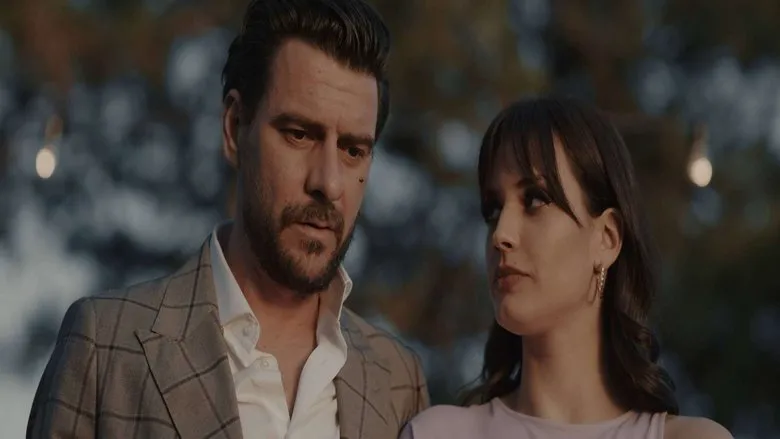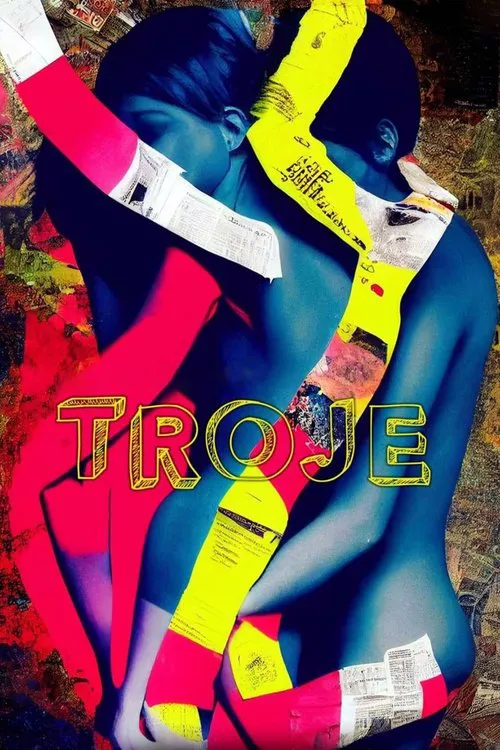Unveiling the Layers: The Behind-the-Scenes Tapestry of ‘Three’
Stepping into the enigmatic world of Serbian cinema often means confronting bold narratives that unearth the complexities of the human psyche. The recent drama, ‘Three’, is no exception. More than just a film, ‘Three’ is a masterful dissection of modern relationships, a challenging exploration that forces viewers to re-evaluate their most cherished conventional notions of love, loyalty, and companionship. But how does a film so intimately probe such sensitive territory? Let’s delve into the creative currents that flow beneath its surface.
The Genesis of a Relationship Earthquake
At its core, ‘Three’ thrives on a singular, audacious premise: a shocking proposal that irrevocably shatters the seemingly perfect life of Ivan and Vera, a well-off couple enjoying the comforts of a luxurious villa with their two daughters. Much of the film’s power stems from this narrative keystone, meticulously set up through the contrasting worlds Ivan inhabits.

The creative team behind ‘Three’ masterfully built the tension through the introduction of Ivan’s clandestine double life. While perceived by his architect wife Vera and his childhood friend Aleksandar as a devoted husband of modest tastes, Ivan secretly indulges in a darker, more reckless existence in upscale nightclubs. This carefully constructed facade is not merely a plot device; it’s a character in itself, painstakingly crafted to explode under the weight of Aleksandar’s unexpected confession. The very nature of this secret life, hidden from those closest to him, sets the stage for the dramatic unraveling that defines the film.
Crafting Characters Under Duress
The power of ‘Three’ lies not just in its shocking premise, but in the nuanced portrayal of characters forced to confront uncomfortable truths. The film effectively uses its three central figures – Ivan, Vera, and Aleksandar – as conduits for exploring the multi-faceted nature of human connection.
- Ivan’s Reckoning: The most visible journey belongs to Ivan, who grapples with the fallout of Aleksandar’s bold declaration. The tension inherent in Ivan’s struggle to reconcile his hidden desires with his public persona, coupled with managing his deep-seated feelings for Aleksandar, forms the emotional backbone of the narrative. The screenwriting implicitly explores the psyche of a man whose carefully built world cracks, revealing vulnerabilities and conflicted loyalties.
- Vera’s Ordeal: Seen largely through Vera’s perspective, the film immerses us in the emotional turmoil of a woman whose world is upended. Her relationship with Ivan is subjected to the ultimate test, forcing her to navigate a maelstrom of betrayal, disillusionment, and her enduring affection for her husband. The directing subtly captures her internal conflict, from the initial shock to the painful process of trying to reconcile feelings towards a husband who has concealed so much, and a friend who has made such an astounding claim. Her struggle to differentiate between deep friendship and romantic love becomes a central thematic anchor.
- Aleksandar’s Catalyst: Aleksandar is not merely a plot device but a critical character whose actions challenge societal and relational norms. His candid declaration of love to Ivan acts as the ultimate disruptor, forcing all characters, and by extension the audience, to navigate the complexities of intimacy, boundaries, and unspoken desires within long-standing relationships. His portrayal brings to the foreground unspoken attractions and the courage (or recklessness) required to voice them.

The Intimate Lens: Directorial Choices and Thematic Depth
The directorial approach in ‘Three’ is key to its impactful storytelling. The film avoids sensationalism, instead opting for an ‘intimate lens’ that delves deep into the emotional landscapes of its characters. From the luxurious settings of Ivan and Vera’s villa – symbolizing their outwardly perfect life – to the darker, more ambiguous spaces of Ivan’s secret escapades, the cinematography visually articulates the contrasting facets of his existence.
The film’s pacing allows for these emotional confrontations to simmer and boil, rather than rushing through them. This deliberate approach ensures that the audience feels the weight of each revelation and the profound shifts in the characters’ perceptions of each other and themselves. By focusing on the unspoken tensions and the subtle nuances of human interaction, ‘Three’ elevates itself beyond a dramatic thriller to a profound character study.
Ultimately, ‘Three’ is an eloquent cinematic meditation on the true nature of human connections. It is a bold statement, daring its audience to confront their preconceived notions of commitment, desire, and the intricate, often messy, lines between passion and companionship. The success of ‘Three’ lies in its courage to pose such raw, fundamental questions, leaving a lingering impression long after the credits roll.